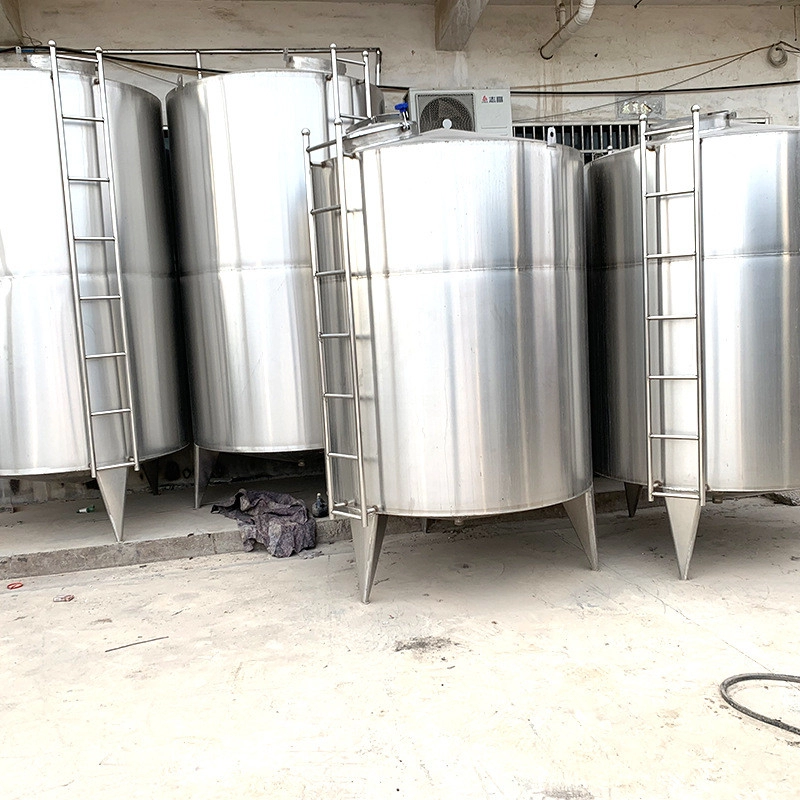Stainless Steel Water Storage Tank: 5 Must-Know Secrets for Longevit

Why Your Tank’s Lifespan Might Be Shorter Than Expected
Many operators assume stainless steel water storage tanks last forever. Truth is, corrosion still occurs without proper care. I’ve seen tanks fail in just 10 years due to neglect. Surprisingly, water chemistry matters more than tank thickness. For example, high chloride levels accelerate pitting corrosion.
Secret #1: Material Grade Selection Isn’t Optional
Not all stainless steel is equal. Grade 304 suffices for low-chloride environments, but coastal areas need 316L. Our 2025 project in Florida showed Grade 304 tanks developed pitting within 3 years, while 316L remained intact. Always match alloy to local water reports.
Material Comparison Table
| Feature | Grade 304 | Grade 316L |
|---|---|---|
| Corrosion Resistance | Good for freshwater | Excellent (withstands chlorides) |
| Cost | $$ | $$$ (20-25% higher) |
| Ideal For | Municipal water | Coastal/industrial areas |
Secret #2: Installation Mistakes That Trigger Corrosion
Improper installation causes 42% of early failures . Follow this 5-step guide:
- Site Preparation: Level ground with drainage slope
- Insulation Barrier: Use rubber pads between tank and concrete
- Sacrificial Anodes: Install zinc anodes if water conductivity >500 µS/cm
- Electrical Isolation: Prevent contact with copper pipes
- Post-Install Cleaning: Remove welding contaminants immediately
Secret #3: The Cleaning Ritual Most Operators Skip
Bacterial biofilm accelerates corrosion. Shock chlorination isn’t enough. Our team uses a 3-phase process:
- Mechanical scrubbing of weld zones
- Citric acid passivation (not hydrochloric!)
- Rinse water conductivity testing
This extends service life by 15+ years according to Water Quality Association data .
⚠️ Critical Warning: The Chloride Trap
Never use salt-based cleaners on stainless steel water storage tanks! I witnessed a dairy plant’s $80,000 tank ruined in months by chloride-rich “stain remover”.
Secret #4: Monitoring Tech That Pays for Itself
Corrosion probes cost less than 5% of tank replacement. Interesting fact: electrochemical sensors detect pitting before it’s visible. Pair them with:
- Annual ultrasonic thickness mapping
- Monthly bacterial counts
- Real-time TDS monitors
Check industrial-grade monitoring systems at CNC Machining Solutions.
Secret #5: The Repair Paradox
Counterintuitively, patching small leaks can worsen damage. Why? Thermal stress from welding alters microstructure. For pinhole leaks:
- Drain below leak level
- Use epoxy-based sealants rated for potable water
- Schedule professional weld repair during next maintenance
Your Longevity Checklist
□ Quarterly visual inspections (especially under fittings)
□ Annual water chemistry analysis
□ Biannual anode replacement (if installed)
□ 5-year professional passivation
□ 10-year ultrasonic thickness testing
FAQs: Stainless Steel Water Storage Tanks
Q: How long do stainless steel tanks really last?
A: Properly maintained tanks last 30-50 years vs 15-25 for poorly maintained ones.
Q: Can I install one underground?
A: Not recommended. Soil corrosion and difficult inspections make this risky.
Q: Why choose stainless over plastic tanks?
A: Superior UV resistance, structural integrity, and no plastic leaching. See comparison table above.









